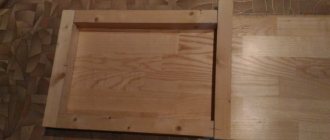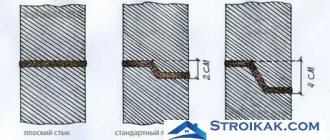Home |GOSTs and SNiPs |GOST 6665-91. Concrete and reinforced concrete side stones
Date: November 28, 2017
Comments: 0
Various types of curb fences are used in road construction and landscape design. They are installed along highways and at public transport stops. They edge pedestrian paths and also separate green spaces in park areas and squares. Industrial products combine functionality and attractive appearance. Knowing the purpose, it is important to choose the correct size and shape of the curb stone; GOST regulates the dimensions for all types. All that remains is to purchase and properly install the necessary product.
SNiP for curb heights...
in order to prevent accidents, injuries and reduce the likelihood of negative impacts on humans..."
Side stone BR 100.30.15, for separating the roadway of intra-block driveways from sidewalks and lawns GOST 6665-91
Side stone BR 100.20.8, for separating pedestrian paths and sidewalks from lawns GOST 6665-91
And here is the main stone for us cyclists - RAMP Description according to GOST 6665-91 Stone-ramp, reference weight - according to the project (i.e. there are no dimensions, they do it as it turns out on the spot), purpose - for connecting the surfaces of bicycle roads streets and sidewalks with heavy traffic of children's and wheelchairs, etc. with covering of roadways of streets and roads at intersections
Note. The length of the ramp (la) for paving surfaces made of prefabricated slabs is taken as a multiple of the size of the slabs, and other dimensions depend on the type of stone.
Standard sizes according to GOST
Sidewalk curbs are manufactured in accordance with GOST , therefore they have standard sizes, regardless of the manufacturer. According to the state standard number 6665-91 , the products have the following dimensions:
Curb.
- Length – 500/1,000 mm.
- Width – 45/50/80 mm.
- Height – 200/210 mm.
Lawn block.
- Length – 500 mm.
- Width – 70 mm.
- Height – 211 mm.
Road block.
- Length – 1,000 mm.
- Width – 300/450 mm.
- Height – 150/180 mm.
Vibro-cast curbs have similar dimensions, but do not have a clear geometry.
| Small border | Large border | Garden border (vibropress) | Road curb (vibropress) | |
| Dimensions, mm | 500*200*45 | 500*200*70 | 1000*200*80 | 1000x300x150 |
| Weight, kg | 8 | 12 | 25 | 100 |
| On a pallet, pcs. | 100 | 100 | 40 | 18 |
| Frost resistance | F200 | F200 | F200 | F200 |
| Cement brand | M500 | M500 | M500 | M500 |
This will be useful to you
To better understand tiles for sidewalks and paths, and confidently navigate their types, shapes and sizes, read this article >>>
The difference between a curb and a curb
As you understand, curbs and curbs are elements that separate the sidewalk from the roadway or delimit different zones of pedestrian paths (for pedestrians and bicycles, for example). So what is the difference between a curb and a curb?
What is the difference between a curb and a curb - the installation method. Namely, at what height its top is located
If you thought it was size or shape, then you were wrong. They are made from identical elements, which manufacturers call side or curb stones. The only difference is how they are installed. If the surface of the side stone is flush with the covering, then it is a curb. If part of the height protrudes above the covering level and forms some kind of obstacle, this is a curb. That is, it depends on how deep you bury the curb block.
Material Components
The components used to make curb stones are natural materials - granite, concrete mixtures and concrete. However, due to their high cost, such products are in demand only for decorating private areas.
At this time, on-board products, which include cheaper and more practical raw materials - concrete, sand, water and additional fillers - limestone, screenings of crushed stone, granite, have gained general popularity.
To ensure that the structure does not lose its original shape, many manufacturers use reinforcement techniques. This makes it possible to obtain products that have not only an aesthetic appearance, but also a long service life.
Curb and curb made of concrete - types, differences, advantages
Externally, the curb and curb look the same, but there is a difference between them:
- curb - when installed, it does not form steps; it is used to combine two horizontal surfaces that lie on the same level. It can be found at the border of the sidewalk and the roadway;
- curb - installed to form a protrusion, or step, it connects two surfaces lying at different vertical levels or with different coatings. It is laid: on the border of sidewalks and roadways, lawns, flower beds.
Another difference between these products is that the curb does not allow cars to enter the pedestrian area, while the curb is more intended for landscaping and protecting paving slabs from spreading to the sides.
Kinds
There are several types of concrete curbs depending on their application:
- road - it is laid along the edges of city roads, highlighting the road surface and protecting pedestrians from collisions;
- trunk - used for edging the road lane on highways;
- garden or sidewalk - a small curb that is used for paving paths and paths in the garden.
Externally, all types of borders are the same - a gray rectangle, sometimes with a beveled corner.
In addition, fences made from curb blocks are classified according to the type of raw material from which they are made:
- vibration-pressed - have high wear resistance, have a long service life at high temperature changes;
- reinforced concrete - made from fine-grained reinforced concrete, they are reliable and resistant to mechanical damage.
Advantages of curbs
Unlike self-pouring monolithic enclosing structures made of reinforced concrete mixture on site, installing a garden border has a number of advantages:
- speed - you can lay the tiles 3-4 days after installing the curb, and do not wait for the concrete to dry completely - 14 days or more;
- resistance to weather conditions and frost resistance;
- high efficiency - due to the absence of formwork work, much less concrete solution is consumed;
- high quality of products - when making the mortar yourself, it is difficult to provide the required grade of concrete and there is a threat of cracks appearing in the structure over time;
- low maintenance and care requirements;
- neat appearance and smooth shapes;
- manufacturability - on uneven areas it is difficult to install the formwork correctly, by installing curbs you can completely replicate the unevenness of the landscape;
- ease of installation and affordable cost;
- You can use borders to enclose any outline of a path, flower bed, or recreation area.
It is also possible to design round areas with standard blocks.
For the adjacent area, garden borders of 100 x 20 x 8 cm or 50 x 20 x 8 cm format are usually used.
How much does a bead stone weigh?
Given the wide range of sizes, sidewalk curbs cannot have the same weight (see table above). Here you will also have to divide into groups. It looks like this:
- Curbs and lawn blocks. The weight of the products varies between 18-36 kilograms.
- Road curbs. Here, the mass of products can vary between 95-150 kilograms.
The weight of vibration-cast curbs is difficult to calculate. The products have variable geometry; accordingly, the mass of the stone will also change. If we talk about average values, the weight of the product is about 100-120 kilograms.
Installation instructions
We will talk about installing lawn or garden ones, which are needed to separate the garden path
It doesn’t matter what you plan to pave the path with - paving stones, stone or other covering, so that it does not blur, you need limiters. Most often they make a low curb
That is, the top of the path fence is several centimeters higher than the surface of the path and the ground itself on the other side. In this case, when watering or raining, the soil will not wash onto the path.
These are the recommended installation schemes for curbs with paving slabs
Work order
So, here is the procedure for installing the curb:
- Draw a path on the ground. To do this, use a thick plastic bag filled with sand. One corner is cut off, resulting in a thin stream of sand, which is convenient for marking. If you need to fix something, that's also not a problem. They erased it and painted it over again.
- We dig a trench. Width - 30-40 centimeters, depth - about 20-30 cm. In general, the depth of the groove for installing a curb depends on the height of the curb. Or rather, the part that you were planning to bury. Under it there should be crushed stone bedding and a layer of concrete.
- We level the bottom of the trench and compact the soil. You probably have a rough idea of how to level it. What to tamp with? If you know how to cook and have a welding machine, take a piece of thick metal, weld a piece of rod or pipe to the middle, and a crossbar-holder on top. Get a normal tamper. It will also be needed when leveling the surface for the path. Don't have a welding machine? Do the same with wood. Not bad either, although the mass is less. How to install a border/curb for a path with your own hands
- Next, pour crushed stone onto the leveled and compacted bottom. The layer is about 10-15 cm. We also level it and tamp it until the mark of your foot is visible on it.
- We take pegs and ropes. We fill the pegs and stretch the rope. The height of the rope is the top of the curb. We check the horizontalness of the thread with a building level. It will serve as a guide when setting the curb height.
- Mix sand-cement mortar grade M300 or higher. We lay it out under the thread in an oblong mound. Place a border on the prepared pillow and align it along the stretched thread. The bottom edge must be recessed into the concrete by at least 5 cm. If such a layer does not work, add concrete on the sides on both sides.
That's all. Then we continue in the same spirit: we laid out cement, installed/leveled a piece of curb. We coat the joints of two fragments of the curb with a layer of cement. We remove its remains immediately after installation and alignment. If it dries, there will be ugly marks that are very difficult to get rid of. If installing one border takes a little time, you can spread the solution on several “borders” at once. It will be faster this way.
Features and subtleties
The most questions usually arise about crushed stone. Not everyone fits it. You can do without crushed stone if the soil is sandy. Then just level the bottom of the trench and you can continue working. But if the soil is clay or loam, black soil, then without gravel backfill in the spring the borders are simply pushed out in different directions. So here gravel gives an increase in durability. Can I use gravel or construction waste rather than crushed stone? It's better than nothing, but not the best option. Especially the brick break. Over time, it will collapse and turn into crumbs, and the curbs will sag. So, it’s better not to, but see for yourself.
We select the dimensions of the borders (height) taking into account the fact that some of them need to be buried
One more thing. Clay, black soil and loams “eat up” gravel amazingly quickly. He drowns in them. If you want a “long-lasting” path, lay geotextiles at the bottom of the trench. Its edges should extend beyond the trench. You just straighten them along the edges. When the curb was installed on the cement, the edges of the geotextile were rolled up and the concrete was covered with film. After a week, you can remove the film and fill the trench with soil. The edges of the geotextile do not need to be unfolded. Then the crushed stone will not wash away.
A few words about how much solution to mix. Depends on how fast you work. If you have little experience in such work, it is better to make a very small batch for the first time - two or three stones. The fact is that if the concrete starts to set, it will have to be thrown away. It will not recover if water is added. No, you can and will get the desired consistency. But the concrete itself will be from the word “nowhere”. It may not gain any strength at all or be very tiny. In some cases, so much so that you can just pick it out with your finger.
SNiP 35-01-2001 and GOST 6665-91
Interestingly, the document (building codes and regulations), which should help cyclists overcome curbs and easily enter sidewalks, is intended for the design, construction and reconstruction of buildings and structures that are accessible to all groups of people with limited mobility. Here the interests of cyclists coincide with the interests of wheelchair users. And since Russia signed the Declaration of the Rights of Persons with Disabilities, adopted by the General Assembly in 1975, there are articles in the legislation that are useful to us, cyclists.
Quote from the current SNiP 01/35/2001:
3.4 The height of curbs along the edges of pedestrian paths on the site is recommended to be at least 0.05 m. The height of the side stones at the intersection of sidewalks with the roadway, as well as the difference in heights of curbs, side stones along maintained lawns and green areas adjacent to pedestrian traffic routes, should not exceed 0.04 m.
This “SNIP” (building codes and regulations) is included in the international Classification ISO 91.040.01, which provides people with disabilities the opportunity to lead an active lifestyle.
Production
For city roads, as a rule, unreinforced concrete curbs are used, produced by vibration pressing or vibration casting; for highways, reinforced concrete curb stones produced by reinforced concrete factories and granite curbs are used, from raw materials obtained by quarrying.
The most popular method of producing urban road curbs is vibrocompression; the process can be organized in small industries and consists of the following main stages :
Preparation of concrete mixture M400-500 and B22-30.- Dyes and additives for frost resistance and plasticity are added according to technology.
- Pour the working mass into molds.
- The vibration pressing process is started.
- The products are sent to dry.
- Remove curb stones from the mold.
In order to simplify the installation process, during loading and unloading operations, curbs with a length of more than 1 m are additionally equipped with mounting loops.
Find complete information about production here.
Garden borders
They are intended for decorating a garden plot. Flowerbeds and beds, artificial ponds and alpine slides cannot be imagined without border fences.
What are the advantages of garden borders?
In addition to the decorative function, side stones:
- Reduces the growth of weeds in cultivated areas.
- They hold the soil back, preventing it from spreading when watered.
- Contribute to more rational care of cultivated plants.
Garden borders add aesthetics and a well-groomed appearance to beds and flower beds. They can be made of wood, plastic, stone, concrete and available materials.
plastic garden border
How to install correctly?
Regardless of which border is used, the installation principle is the same. The first step is to prepare the site for further work. After this, a trench of the required length is dug; its depth should exceed the dimensions of the side stone by a third. Then specialists compact the bottom using crushed stone and sand.
The installation of the curb element is carried out using a rubber hammer, with which you need to tap the structure so that it sinks to the desired depth. After this, the joints are fastened, and the gaps in the trench are filled with mortar. You can lay the border in different ways, it all depends on which one you are using. If it's a tile look, it can be laid like a domino or at a slight slope to create a nice boundary. When installing a curb near the roadway, you need to work longer, making sure that the structure holds well and can withstand impacts from a car.











